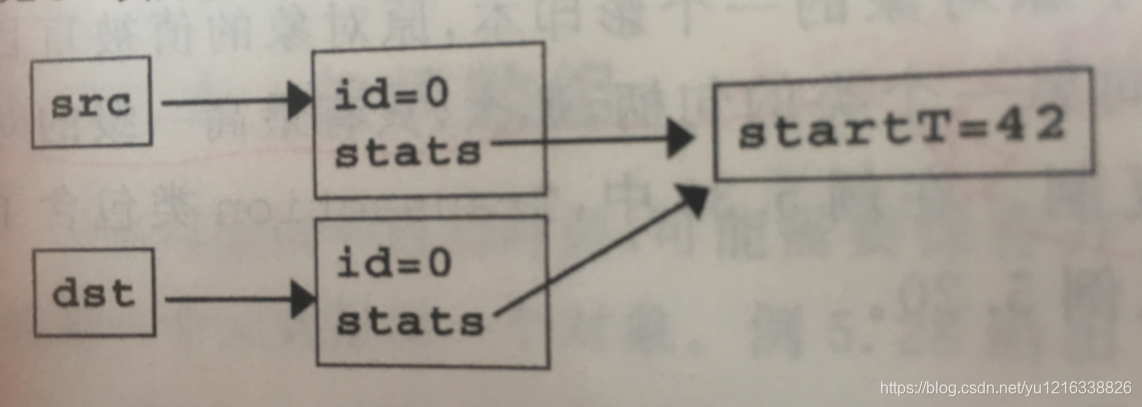SV中shadow copy和deep copy的区别
1.1 shadow copy ,是一种简易复制,类似于原对象的影印本,只拷贝原对象的内容,不拷贝对象(用new操作符)
class Transaction;
bit[31:0]addr,crc,data[8];
endclass
Transaction src,dst;
initial begin
src=new;//创建第一个对象
dst=new src//使用new操作符进行复制
end
1.2如果类中包含一个指向另一个类的句柄,那么只有高一级的对象(变量和句柄)被new复制,下层的对象不会被复制(复制后,两个对象指向同一个低一级的对象!)
class Transaction;
bit [31:0] addr,crc,data[8];
statistics stats;
static int count=0;
int id;
function new;
stats=new();
id=count++;
endfunction
endclass
Transaction src,dst;
initial begin
src=new();
src.stats.startT=42;
dst=new src;
dst.stats.startT=96;
display(src.stats.startT);
在使用new操作符进行拷贝之前,dst为空;使用new操作符进行复制之后,src中变量和句柄的值被复制(但是不会调用new函数,所以两个Transaction对象的id值相同,并且指向同一个statistics对象!)

使用new操作符进行复制之后的对象和句柄
2、 deep copy 可将拷贝对象中所包含的对象拷贝过来(自定义copy函数,copy调用了new函数)
class Transaction;
bit [31:0] addr,crc,data[8];
statistics stats;
static int count=0;
int id;
function new;
stats=new();
id=count++;
endfunction
function Transaction copy;
copy=new();
copy.addr=addr;
copy.data=data;
copy.crc=crc;
copy.stats=stats.copy();
id=count++;
endfunction
endclass
Transaction src,dst;
initial begin
src=new();
src.stats.startT=42;
dst=src.copy();
dst.stats.startT=96;
$display(src.stats.startT);
end

经过深拷贝后的对象和句柄